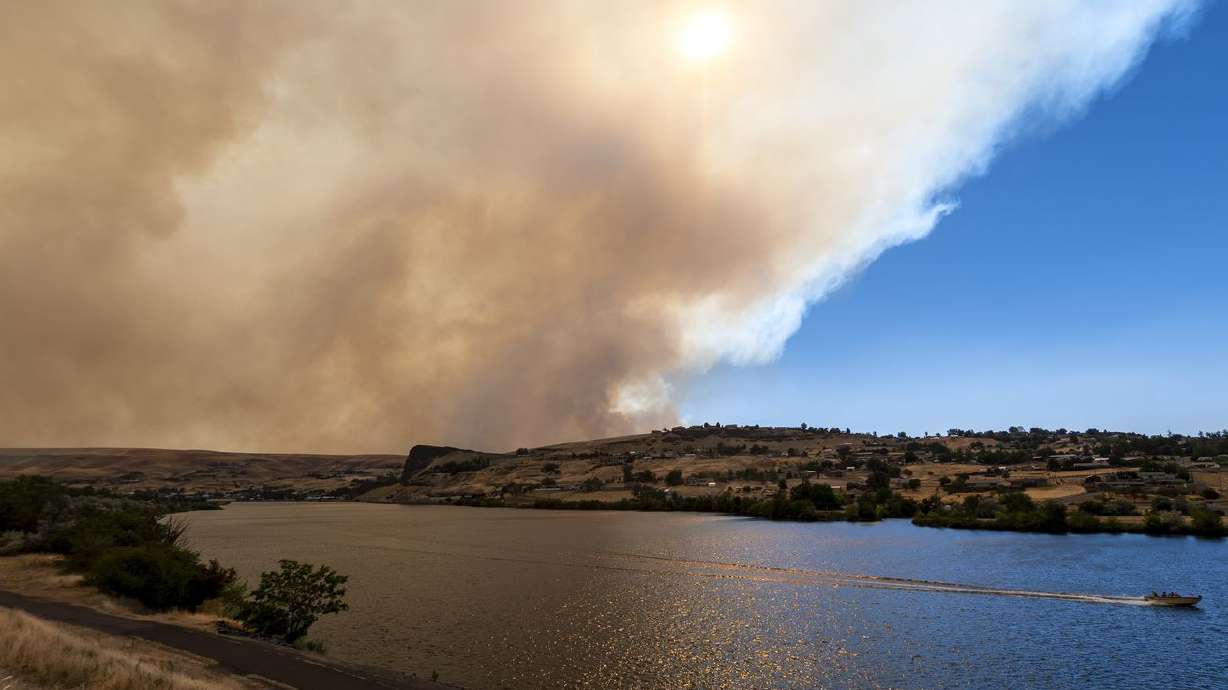Estimated read time: 3-4 minutes
This archived news story is available only for your personal, non-commercial use. Information in the story may be outdated or superseded by additional information. Reading or replaying the story in its archived form does not constitute a republication of the story.
SALT LAKE CITY — The sunny skies and pleasant fall afternoons may bode well for your mental health, but they're not going to help you when it comes to next year's irrigation season.
Snow needs to be on the main menu for states like Utah, Idaho and others in the West to help them counter the effects of a vicious drought that shut down boat ramps across reservoirs, and led to an early end of outdoor watering and yellowed lawns.
Idaho's drought remains a concern, as do conditions in Utah because it is so early in the precipitation accumulation season.
Idaho media reports detail how water systems in the state are left with little to nothing in emergency water supplies.
Troy Lindquist, senior service hydrologist with the National Weather Service in Boise, said with the irrigation season over, the demand for water has backed off.
"Now it is a wait-and-see game. We have had some good precipitation this fall, which is valuable for recharging the groundwater and that helps set the stage for a good runoff next spring."
The time for worrying, however, is not over.
Lindquist said smaller reservoirs were drawn down in a severe manner, and even the bigger systems operated by the U.S. Bureau of Reclamation were diminished to well below normal.
"We need a couple of seasons to work our way out of these extremely dry conditions."
He added there is hope that an active La Nina pattern over the Pacific Ocean will result in wetter than normal conditions for Idaho.
Portions of Idaho remain in extreme or exceptional drought — the worst category there is — according to the U.S. Drought Monitor.
Much of Utah remains in extreme drought and a portion of central Utah is classified as being in exceptional drought, despite weather reports that indicate the state had its 16th wettest October on record since 1895 and the Salt Lake City area experienced its seventh wettest October since the mid-1870s.
Utah, like its neighbor to the north, was forced to dip into emergency reservoir storage to hobble through the summer.
The majority of irrigation systems across the state cut their season short as water supplies dwindled alarmingly low, and even as early as March, Utah Gov. Spencer Cox declared a state of emergency due to the extremely poor runoff and dry soils.
Later in the spring, he implored Utah's faithful to pray for relief.
Now it is a wait-and-see game. We have had some good precipitation this fall, which is valuable for recharging the groundwater and that helps set the stage for a good runoff next spring.
–Troy Lindquist, National Weather Service
Water managers in Utah have welcomed the periodic march of storms into the state, but many more are needed to assure a decent runoff next year and a vibrant ski season over the next few months.
One wet winter won't be enough to soften the effects of what essentially has been a 20-year period of dryness felt across the basin states.
The tepid snowpack led to first-ever declared shortages on the Colorado River and operational adjustments to Lake Powell.
Alex Desmet, a meteorologist with the National Weather Service in Salt Lake City, said weak storms will graze the state Tuesday and Friday, delivering light precipitation.
"What we really need to have is an above-average snowpack in the mountains this winter to make a real impact."
He stressed the last two winters had below-average snowpack, which impacts reservoir storage and groundwater supplies.
Desmet added that what storms have impacted Utah this fall have helped.
"We are taking some small steps in the right direction, so every little bit helps. The real benefit has been the improvement in the soil moisture."
Utah, he said, is in a bit of a curious position when it comes to predicting how the winter will shape up.
Great snowpack? Low snowpack?
Desmet said there is an equal chance for both scenarios, as if the state were perched in the middle of a teeter-totter.
"The teeter-totter could tilt either way."









